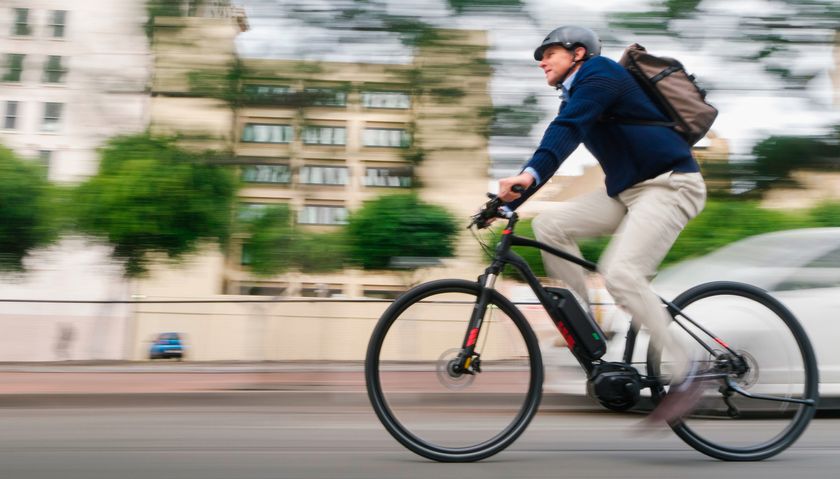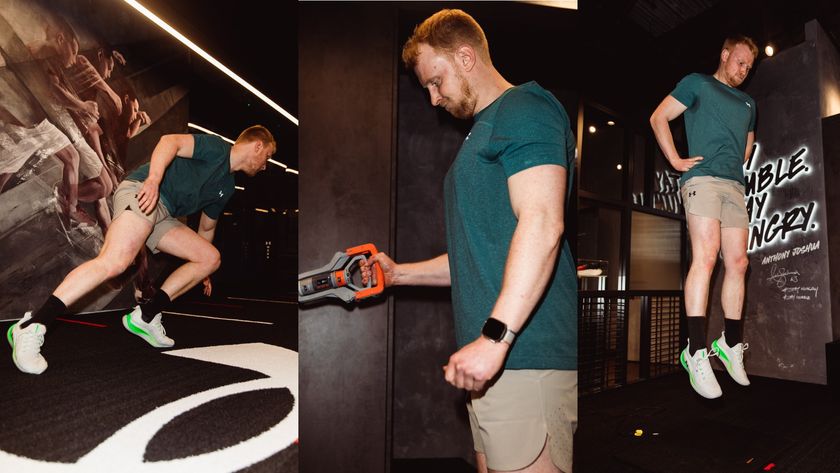Why Sit-Ups Don’t Give You a Six-Pack
And what, in fact, does

It’s one of the most stubborn exercise myths out there – that doing thousands of sit-ups is the way to get a six-pack. In truth, six-packs are made in the kitchen, not the gym, and smashing out countless sit-ups is more likely to result in a sore lower back than a six-pack.
We spoke to Connor Minney, Barry’s Bootcamp trainer, for the lowdown on why sit-ups are not the smartest route to showy abs – and what actually is.
Do sit-ups lead to six-packs?
A sit-up is actually the least effective abs exercise you can do. Doing 100 sit-ups a day will not change your body in the slightest.
How do you get a six-pack?
You’re not going to see your abs if there’s body fat in the way, so you need to check your diet – that’s the number one thing. Once you’ve lost weight you can start to see your abs, then it’s about core training and developing the muscles.
Even if you have got body fat it’s important to have a strong core. Your internal obliques, the erector spinae, transverse abdominal – they’re the deep-lying muscles that you can’t see, but you’re not going to see that six-pack unless your core is strong.
So once you’ve sorted your diet, what exercises should you start with?
You should start by developing the core from the inside out, and the best things for the core and to see your abs are compound exercises. Deadlifts, squats and overhead presses engage every muscle in your core. That’s what I’d recommend – unless you’re a complete beginner. In that case there are exercises for the core and the abs that you can do at home. For example, holding positions like the plank and side plank. They strengthen the core muscles that surround the spine.
For beginners, a plank is a really easy, measurable thing that they can do. Aim to hold it for 30 seconds at first, and then keep practising so you’ll be able to hold it for longer and longer.
Get the Coach Newsletter
Sign up for workout ideas, training advice, reviews of the latest gear and more.
There are loads of ways to hold a plank – on your forearms, or a high plank on your hand, or a side plank on your hands or elbows. Or you can lie on your back and hold a hollow or “dish” hold. There are so many exercises you can do with just your bodyweight, or with a dumbbell or resistance band.
When you need take your core and your abs to the next level, that’s when you’ll use a barbell for those compound exercises that are going to sculpt and shape your muscles.
See related
- Six-Pack Diet: 27 Foods That Will Help To Reveal Your Abs
- The Best Abs Workout: Circuits For Upper Abs, Lower Abs, And Obliques And Core
- The Frog Sit-Up Is Murder On The Abs
How do you work on the superficial muscles?
You have to hit the core from different angles. For example, anything lying on your back and moving your legs will hit the lower abs. For the obliques you want to turn to the side.
Often you can do the same exercise and tilt your body – so if you roll slightly to the side and do leg raises, you’ll hit your obliques. If you lie on your back and do leg raises you hit your lower abs. Same exercise, different parts of the body. Angles, angles, angles.
Are sit-ups completely out then? Or can they be done in an effective way?
You can do sit-ups, but do them right at the end of your workout, because it’s the least effective abs exercise, and use variations. Lie on your back, with your feet on the floor and hands by your sides. Sit all the way up so your back is straight, then control your descent down. That’s one sit-up.
Then try bringing your legs up, bent at the knee so the lower legs are perpendicular to the floor, with your elbows wide, and crunch so your elbows touch your knees. Then as you lower again, try extending one leg out, and bring the leg back in when you sit up.
There are so many variations of a crunch, that use your legs, or different angles. If you really have to do a sit-up, think about what equipment and angles you might use to your advantage.

Nick Harris-Fry is a journalist who has been covering health and fitness since 2015. Nick is an avid runner, covering 70-110km a week, which gives him ample opportunity to test a wide range of running shoes and running gear. He is also the chief tester for fitness trackers and running watches, treadmills and exercise bikes, and workout headphones.









